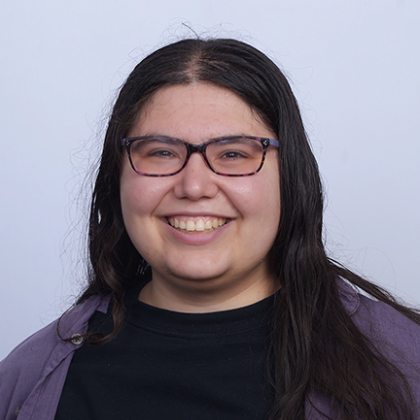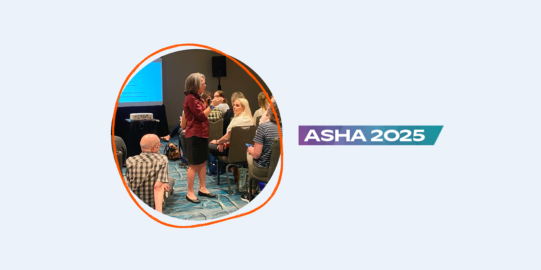Our sessions at Communication Matters 2025
Let’s look before we leap: a thoughtful approach to AI and AAC
Presenters: Alyssa Hillary Zisk and David Niemeijer
Date: Monday, September 8th | Time: 11:15 AM - 12:00 PM | Location: Michael Sadler, LG19
“Artificial Intelligence,” or AI, is a hot topic in the world and specifically in AAC – but “AI” implementations vary widely. We took a broad view to identify different types of “AI,” their uses in AAC, and considerations around these uses. The uses of machine learning techniques for brain-computer interfaces, personal voices, and large language models (LLMs) differ – but all fall under “AI.” By addressing these cases separately, we identified key considerations.
First, we consider authenticity. Professionals express concerns about authorship: LLMs may alter or invent content. AAC users have concerns about message style and tone (Valencia et al., 2023) but also about undue judgment regarding authorship (Holyfield & Williams, 2025).
Second, we consider privacy. “AI” models often involve cloud processing in their creation, adaptation, and/or use. This has trade-offs with authenticity: models tuned with specific user data (neural signals, audio, or text output) can be more effective and authentic, but they then include that data and may reveal it in unintended ways (Valencia et al., 2023).
Third, we consider barriers to learning. A literate user can check LLM-generated text and make decisions about speed, effort, and tone. However, much like calculator use elides the math skills to effectively use a calculator, LLM use elides the language skills to check and edit LLM output.
Finally, we consider availability and accessibility – some applications of “AI” are becoming ubiquitous. Others may be touted as the future of AAC while remaining inaccessible (e.g. voice banking, Preece et al., 2024) or rarely available (e.g. brain computer interfaces, Sellwood et al., 2024).
Addressing “AI” in AAC effectively involves considering each of its use cases on its own merits. It also involves addressing these considerations – not as issues unique to the intersection of AAC and AI, but as applications of broader issues to this intersection.
Measuring AAC User Linguistic Competence: A Novel Approach
Presenters: David Niemeijer and Alyssa Hillary Zisk
Date: Monday, September 8th | Time: 4:25 PM - 5:10 PM | Location: Clothworkers South, G14
This session explores how to measure multiple dimensions of linguistic competence for language produced with AAC systems. Light (1989) distinguished four forms of communicative competence in AAC: linguistic competence, operational competence, social competence, and strategic competence. Linguistic competence includes managing the phonological, morphological, syntactic, and semantic aspects of language and their expression within the language organization of the AAC system.
Mean Length of Utterance (MLU) (Rice et al., 2010) has long been used to capture language proficiency, including for AAC use. However, MLU is not sufficient or robust for language produced with AAC systems (Binger et al., 2020; Niemeijer & Sheldon, 2023). We therefore explore how to measure the multiple dimensions of linguistic competence robustly while maintaining privacy.
We analyzed anonymous language use data from over 30,000 symbol-supported and text-based AAC systems. We identified several potential methods to measure the syntactic, semantic, morphological, and phonological components of linguistic competence while respecting AAC user privacy. Measures were compared to factors such as grid size, vocabulary level, percentage of words typed, and symbol-based versus text-based systems. We found inconsistent patterns and low correlations for the density measures compared to the diversity measures, which showed significant higher correlations. The most robust measures were based on the lexical diversity (Covington & McFall, 2010; Charest et al., 2020) and syntactic diversity of spontaneous novel utterances (not including pre-programmed phrases, Hill, 2014). Further measures for morphology and phonology should continue to be developed and tested, but there is some value to considering morphological diversity and the percentage of correctly spelled unique words for these aspects of linguistic competence.
Part-time AAC Use: What does it mean and why does it matter?
Presenter: Alyssa Hillary Zisk
Date: Tuesday, September 9th | Time: 2:00 PM - 2:45 PM | Location: Michael Sadler, LG19
Some autistic people use both augmentative and alternative communication (AAC) and speech. Because both this AAC use and the terminology used to describe it come from Autistic communities, researchers and professionals have been less aware of it. Now, more people are starting to find out (see reference list). This presentation will introduce part-time AAC use and speech experiences that some speaking autistic people use AAC about. It will compare and contrast these community-sourced terms with each other, and with more traditional clinical terms related to speech. The presentation will introduce how these experiences can affect communication. There will be a group discussion on how AAC supports can be helpful when oral speech is unavailable, in communication repair, and in supporting word by word generation of messages at times when oral speech would only support insufficient or unreliable scripts. There will be some discussion of device funding. The funding discussion will cover general strategies rather than funder-specific requirements.






